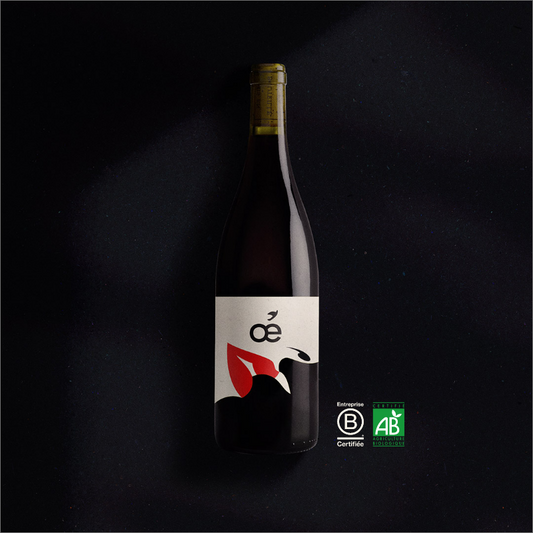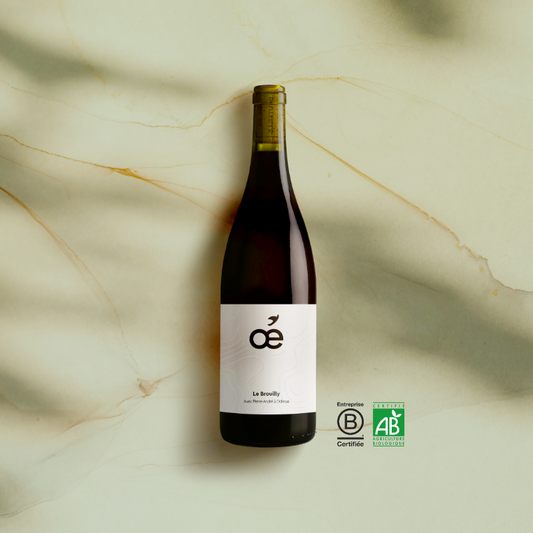Ah the vines , so beautiful at any time of the year! Have you ever ventured into a vineyard plot in autumn? In summer ? Spring awakening? You probably noticed that they are different according to the seasons . And yes, summer is over and autumn is coming, if the summer period is often conducive to travel, autumn often gives way to cocooning desires. And what about the vines ? And far from a period of rest, autumn is the most effervescent period for the harvests and the winegrower. From harvesting to vinification and preparing for winter, a brief overview of the autumn season in the vineyards.
Work in the vineyards
In the vineyards and all areas , each season corresponds to a very particular job. Winter is the period when the vines are pruned and when they are immersed in a winter rest. Spring is the time when the vine wakes up, summer is the period of growth of the vine and its preparation for the harvest . And it is in autumn that we arrive at this famous harvest period and the most important work in the cellar. This period runs from the end of September to mid-December.
Harvest
In the Mediterranean regions and in Burgundy, the harvest can begin at the end of the summer, we then speak of early harvesting . In most of the vineyards, it is at the beginning of autumn that the harvests begin and they generally take place from the end of September until mid-October. This year, due to episodes of hail and intense cold, the buds suffered and the harvests, even in the south of France, will take place in September.
The winegrowers observe their vines to define the best time to start the harvest . They take grapes and observe the color of the pips by crushing the round fruit in the palm of their hand. At the same time, they remove leaves and branches from the vines to optimize the yield - this is called leaf stripping . This action makes it possible to concentrate the sap on the buds which develop better and to allow the sun to pass through to dry any rain and prevent certain diseases such as mildew. In mid-September, the vines were well prepared and the harvest could begin depending on the estate.

And this is where the most important work period of the year begins for our winegrowers. They put on gloves and caps and with the help of several seasonal workers, the harvest can begin. Harvesting the grapes lasts an average of two weeks and is done either by hand or mechanically with harvesting machines. This technique is faster but also more brutal for the grapes. Hand harvesting is gentler on the fruit and more meticulous and allows the best grapes to be selected. This practice is longer and more tiring. Several factors determine the type of harvest for winegrowers: climatic conditions recommend a quick harvest, some appellations require manual harvesting. On arrival, the choice remains in the hands of the winemaker .
The most important thing is to surround yourself well to help each other and share a good time. At Oé, the whole team participates in the harvest of one of our winegrowers every year. It is important for us to share this moment with them to help them and be closer to their work. It is above all an ideal moment to enjoy a moment of pleasure all together and to recharge your batteries in nature and the vineyard. And you, have you ever participated in a harvest? Would you like to participate with us next year?
Late harvest
We talk about late wine to designate wines whose harvest takes place later in the season, around November, to have overripe grapes. Late harvests? But why leave overripe grapes Jamy? To have sweet wines rich in sugar and alcohol, more pronounced in taste such as sweet wines for example. That's how you get Côtes de Bergerac Oé or good Monbazillac , for example . There are several methods to let wine mature, such as raisining.
The passing? Yes, this somewhat complicated term hides two very simple techniques for enriching grapes with sugar:
- Raising on the stump consists of removing the leaves at the level of the bunch to expose it to more sunlight, the grapes left under the stump for longer will then take on a drier appearance.
- Raising off the stumps , placed on wooden or metal racks for several weeks or months to keep the acidity of the grapes. This is how straw wines are obtained.
In certain regions such as Bordeaux and the South-West, grapes left to mature longer see Botrytis cinerea develop on their skins . No, it's not a Harry Potter spell, it's a fungus that can cause serious consequences to the vine. Do not panic, the winegrowers have managed to use nature wisely. When we harvest at the right time and the fungus is not too present, we speak of noble rot. The fungus makes the skin of the grape thinner, pierces its skin and lets the water evaporate, it then loads the bunch with new flavors. Incredible isn't it? Do you want to know more about harvesting in organic vineyards ? We have prepared an article to make you knowledgeable on the subject. It's this way !

Winemaking and the work of the winegrowers in the cellar
In the fall, the cellar is as busy as in the vineyards. And yes, autumn is a very intense period for the whole estate. In the cellar, it is the start of vinification. As soon as the grapes are received, they will go through several stages: pressing, destemming, destemming, pumping over, pigeage … Oh dear, but what does all this mean? We explain everything below!
When the grapes arrive at the cellar , they pass through a sorting table before moving on to destemming (or destemming). This is an optional method where the berries are separated from the grape clusters.
Then, we move on to crushing where we burst the berries to extract the must which we obtain by mixing the skin, the pips and the pulp. Once this stage is over, the must is transferred to tanks where it will macerate with the solid parts of the grapes, the pips and the skins. These solid parts rise to the surface during maceration. Techniques exist to ensure a better mixing of these parts with the rest of the must to extract their essential components: color, tannins and polyphenols (for those who are interested, polyphenols are molecules present in wine that are very good at health) .
Punching down consists of favoring the contact of the skin on the surface with the rest of the must by pushing it into the tank. Pumping over consists of sucking the wine in from below and then raising it to the top of the vat.
This is also when the alcoholic fermentation begins. Fermentation takes place through a chemical process where the sugars are transformed into alcohol and generate carbon dioxide thanks to the natural yeasts present on the skin of the grape. And this is how must turns into wine. This step can take from ten days to a month depending on the type of wine.

The wine is then devatted and pressed to be placed in a steel tank or an oak barrel, this is called aging. The wine will then clarify and the winemaker can opt for techniques such as fining to remove solid residues such as proteins. Fining consists of adding substances to the wine during clarification. For this, our winegrowers use organic and natural elements like Claire and Stéphane, our winegrowers in Bugey who use bentonite . It is a set of granules which, once mixed with water, swells, becomes a kind of gray-green cream and, in contact with the wine, captures the proteins and avoids having a large deposit and a cloudy wine. once bottled.
Once in the vats, a second fermentation takes place, the malolactic fermentation. Behind this somewhat scholarly term hides another chemical process where malic acid changes into lactic acid and where the acidity of the wine is reduced.
All the wines do not follow the same procedure, for example, the white wine is not macerated and it is pressed directly after the harvest to avoid prolonged contact between the must and the solid parts of the grape and therefore with the coloring molecules. For the rosé , we practice a bleeding.
The wines for laying down are placed in barrels to be aged longer, new wines and primeur wines can begin to be bottled. All this does not speak to you too much? We will explain everything to you.
- A wine for laying down is a wine that can age and improve for several years. Do you want to know more about wines for laying down? It's this way !
- A primeur wine is a wine put on sale almost immediately after harvesting and fermentation,
- A new wine is a wine put on sale before the next harvest, so a little later.
The aging of the wine generally lasts between 12 and 24 months but can last several years for wines for laying down . As you have understood, autumn is not a period of complete rest for winegrowers between work in the vines and in the cellar. And again, we haven't told you everything, the winegrower must also take care of the health of his vines and prepare them for winter.
Pre-pruning and preparation of the vine for winter
Once the harvest is over, it's time to do some work in the vines. The winegrower must wait until all the leaves have fallen before pruning .
As long as the grapes are not harvested, we cannot proceed with the preparation for the winter, for the late harvest , so we have to be a little patient. On the other hand, the winegrower can pre-prune his vines. For this, we thin out the vines, we get rid of its useless shoots (the branches that start from the vine stock). We uproot the dead stocks (the foot of the vine), we remove the trellising , we replace the broken stakes, we prepare for winter pruning.
“Winter is coming, brace yourself” as Ned Stark, the famous character from Game of Thrones, would say. We take care of the vines and protect them against the first winter frosts which will soon arrive. We then linger over the hilling of the vines, which consists of piling up the earth, to promote the flow of water and provide protection against the cold.
And yes, to grow, the vine needs well-maintained soil because it draws its resources directly from the earth. We work the soil by plowing it. If you uproot dead vines, you have to plow deeply to loosen it. The winemaker uses a special plow called a ripper. Yes, a ripper. Do not panic, it is not a bulldozer, just an agricultural machine which greatly facilitates the work of the winegrower and which does not harm the vines.
Taking care of the vines also means providing them with mineral elements to harmonize the soils that have nourished the vines. The leaves that fall to the ground provide a biomass gain, and we gladly add barley and peas. To produce good organic wines, winegrowers in organic viticulture do not use chemicals or pesticides. They prefer green manures to fertilize the soil and use biodiversity for their daily tasks. Certain insects regulate the presence of pests and trees and hedges protect the vines.

Autumn is a very important period for wineries, between harvest and preparation for winter, our winegrowers do not have time to get bored. Our organic wines are the result of intense and passionate work by our winegrowers, you can treat yourself by discovering our ranges of red, white and rosé wines.





